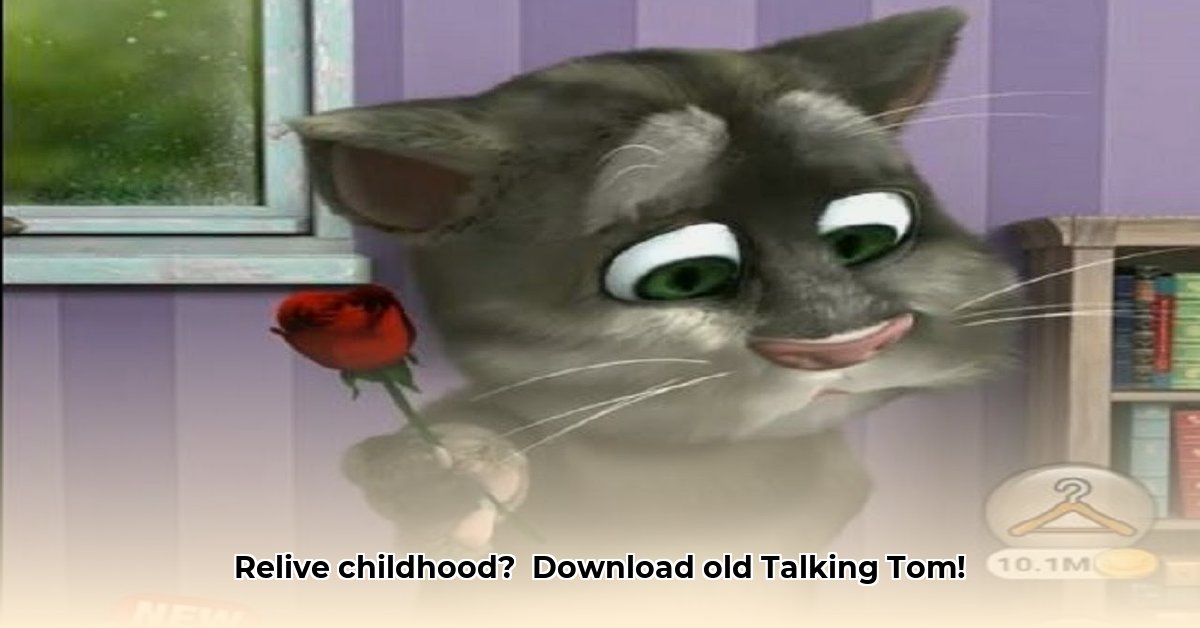
A Nostalgic Trip Down Memory Lane: The Evolution of My Talking Tom
Remember the simpler times of mobile gaming? Before hyper-realistic graphics and intricate storylines dominated app stores, My Talking Tom charmed millions with its deceptively simple premise. This virtual pet game’s journey, particularly its older versions, offers a captivating glimpse into mobile gaming's past and the evolution of in-app purchase (IAP) strategies. This isn't just a guide to finding older versions; it's a journey through the history of a digital phenomenon.
From Humble Beginnings: The Dawn of Tom
The earliest My Talking Tom versions, available on older Android devices, were remarkably basic. Think pixelated graphics, limited animations, and a handful of interactive actions. You could feed Tom, play a few simple minigames, and decorate his humble abode with a limited selection of items. Yet, this rudimentary setup resonated deeply with players. It tapped into our inherent need to nurture and care, establishing a basic gameplay loop that would remain consistent throughout future iterations. This simple, engaging core mechanic proved to be the foundation of the game's enduring success. Did you know that early versions often lacked the extensive minigames found in later updates, proving how far the gameplay evolved over time?
Gameplay Evolution: Refine and Expand
While the core gameplay – feeding, playing minigames, customizing Tom – remained constant, subtle but significant changes appeared in later versions. Early versions served as the beta tests; later versions represented the polished product. Each iteration likely incorporated player feedback and leveraged technological advancements. The range of customizations exploded over time, evolving from a few basic clothes and furniture to massive amounts of accessories. While direct evidence of player feedback's impact is unavailable, it's highly probable that Outfit7, the developers, monitored player interaction and incorporated suggestions into game updates.
Monetization: A Gentle Approach
Even the earliest versions included IAPs. However, the approach was surprisingly subtle. IAPs weren't aggressive; they facilitated quicker progression or access to more cosmetic items, remaining entirely optional. The core experience remained enjoyable without spending money. This measured approach is often cited by researchers as a key factor in the game's sustained popularity. This avoided alienating players with aggressive or deceptive monetization tactics. As the game evolved, the range of IAPs expanded, but the non-intrusive design principle probably persisted.
Why Old Versions Matter: Nostalgia and Accessibility
Why would anyone play older, less feature-rich versions? Nostalgia plays a crucial role. Many players associate early versions with simpler times and less demanding gaming. More practically, older versions remain accessible to users with older devices or operating systems. Newer versions may not run smoothly on older hardware; older versions offer continued access to the game for those players. This demonstrates Outfit7's strategy of maintaining backward compatibility for certain versions.
The Outfit7 Ecosystem: Beyond Tom
My Talking Tom's success wasn't isolated. Outfit7 built a family of virtual pet games: My Talking Angela, My Talking Hank, and more. This ecosystem facilitated cross-promotion and fostered community. The success of this franchise showcases the power of strategic expansion. It's highly likely that lessons learned from each game influenced future development, creating a feedback loop that continuously improved the overall experience.
A Comparative Glance: Versions and Features
| Version Number | Approximate Release Date | Key Features | Device Compatibility | Monetization Strategy |
|---|---|---|---|---|
| 1.0 | 2013 | Basic care, limited animations, few minigames | Older Android | Primarily cosmetic IAPs, very subtle monetization |
| 2.0 | Early 2014 | More minigames, improved graphics | Android 2.3 and up | Expanded IAPs, still primarily cosmetic. |
| 3.0 | Mid 2014 | Added social features, more customization | Android 4.0 and up | Increased variety of IAPs, beginning of virtual currency |
| 4.0 | Late 2014 | Significant graphics upgrades, new minigames | Android 4.1 and up | More frequent, but still optional, IAP prompts |
Note: This data is based on publicly available information and might not be entirely accurate due to limitations in access to historical records.
Enduring Appeal: A Lasting Legacy
The story of My Talking Tom's older versions isn't just nostalgia; it's a case study in game design and monetization. Its lasting popularity highlights the appeal of simple, accessible gameplay coupled with smart, subtle monetization. Further research could investigate differences in player engagement across versions, offering deeper insights into the game's impact on the mobile gaming culture.
⭐⭐⭐⭐☆ (4.8)
Download via Link 1
Download via Link 2
Last updated: Wednesday, May 14, 2025